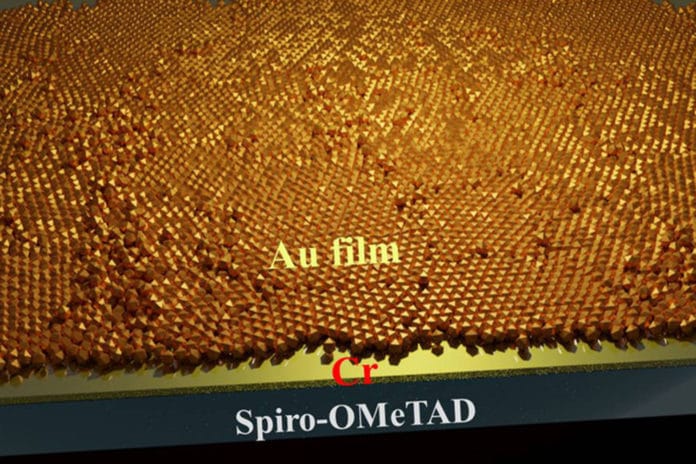Conventional solar cells, based on the photoelectric effect, are made from silicon. But, scientists are continuing to extend the limit of the technology to create more efficient solar cells ever.
Perovskite cells offer a promising other option, and stacking them on top of the conventional cells can make more proficient tandem gadgets.
Recently, scientists from Penn State have developed new ultrathin metal electrodes that can be used to create semitransparent perovskite solar cells. These newly created semitransparent perovskite solar cells are highly efficient and can be coupled with traditional silicon cells to boost both devices’ performance significantly.
Kai Wang, assistant research professor of materials science and engineering at Penn State and co-author of the study, said, “Transparent solar cells could someday find a place on windows in homes and office buildings, generating electricity from sunlight that would otherwise be wasted. This is a big step — we finally succeeded in making efficient, semitransparent solar cells.”
Scientists have created electrodes from a very thin, almost few atomic layers of gold. The thin gold layer has high electrical conductivity, and at the same time, it doesn’t interfere with the cell’s ability to absorb sunlight.
During experiments, newly developed solar cells shown 19.8% efficiency, a record for a semitransparent cell. When scientists combined it with a traditional silicon solar cell, the tandem device achieved 28.3% efficiency, up from 23.3% from the silicon cell alone.
Shashank Priya, associate vice president for research and professor of materials science and engineering at Penn State, said, “A 5% improvement in efficiency is giant. This means you are converting about 50 watts more sunlight for every square meter of solar cell material. Solar farms can consist of thousands of modules, so that adds up to a lot of electricity, and that’s a big breakthrough.”
In a past study, the ultrathin gold film was promising as a transparent electrode in perovskite solar cells. However, there are issues in creating a uniform layer that resulted in poor conductivity.
In this study, scientists solved this issue by using chromium as a seed layer. Using chromium allowed gold to form on top in a continuous ultrathin layer with good conductive properties.
Dong Yang, assistant research professor of materials science and engineering at Penn State, said, “Normally if you grow a thin layer of something like gold, the nanoparticles will couple together and gather like small islands. Chromium has a large surface energy that provides a good place for the gold to grow on top of, and it allows the gold to form a continuous thin film.”
“This breakthrough in the design of tandem cell architecture based on a transparent electrode offers an efficient route toward the transition to perovskite and tandem solar cells.”
Other co-authors of the study are Tao Ye, Jungjin Yoon, Yuchen Hou, Xiaorong Zhang, Shaanxi Normal University, China; Shengzhong Liu, Chinese Academy of Sciences; Congcong Wu, Hubei University, China; and Mohan Sanghadasa, U.S. Army Combat Capabilities Development Command.
The scientists reported their findings in the journal Nano Energy.
